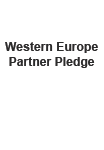In today's world knowing our customers is essential. Knowledge about customers has become a necessity for companies which strive to offer their customers better products, services and experiences. We talk about the 6 essential technologies to know our customers better.

Communication channels between companies and their customers have enormously expanded in the last decade. Not only we have more touch points between customers and companies, but the sources of information about consumers have also increased and been perfectioned thanks to technology.
In this sense, knowing the customer has become a priority for organisations with more and more companies striving to put the customer at the centre of all their business decisions or, in other words, to become customer-centric.
Nowadays, understanding our client goes far beyond the collection of socio-demographic data. Knowing customers' age, gender and place of residence is no longer enough. To be competitive, companies need to go a step further and try to find out what drives customers, their consumption habits, their interests, their problems, their goals and what makes them happy. The focus is no longer just on the product or service being offered; providing an optimal customer experience throughout the buying process is just as important as the product or service we offer.
6 essential tools to better understand your customers
1. CRM
CRM (Customer Relationship Management) is one of the most innovative tools used by organisations, as it brings together a whole system of technologies and strategies aimed at improving customer relations.
Beyond being a mere analysis platform, CRM is a 360º software that allows companies to manage sales, marketing, customer service, customer-centric strategies, all their touch points and the customer experience.
Organisations use CRM to optimise their marketing and sales strategies, enhance the customer experience, anticipate their clients needs, create personalised content and campaigns, increase sales and, in general, optimise any action linked to the relationship between company and customer.
2. Customer Segmentation
La segmentación de clientes es una de las estrategias más efectivas para conocer mejor a nuestros clientes.
Customer segmentation is one of the most effective strategies for getting to know our customers better.
Essentially, segmentation consists of classifying our customers into groups or clusters based on the aspects that bring them closer and pull them apart. In other words, applying classification parameters —which will vary according to the interests, needs and business objectives of each organisation— to discover valuable insights, find common characteristics among consumers and, consequently, being able to make the right decisions according to the needs of each segment.
Clearly, treating all customers equally is not effective. In this sense, segmentation is the key to developing actions and strategies aimed at giving specific answers to the needs of each type of customer and creating personalised, segment-specific campaigns and customer experiences.
Carrying out a customer segmentation process also involves getting to know our clients better. In order to be able to categorise them, it is first necessary to carry out a deep research about each one of them. Thus, segmentation is one of the most complete strategies to understand our customers better.
3. Customer Profitability Dashboard
Beyond technologies that help us discover general information about our customer's behaviour, there are also specific tools that we can use to optimise customer strategies from a concrete perspective.
For example, ABC Client Analysis is a type of customer segmentation dashboard that focuses on our clients' profitability and contribution to revenue. Thus, this technology helps marketing, sales and commercial teams to focus their efforts on the most profitable, strategic and potential customers.
ABC Client Analysis identifies links between turnover, profitability and customers and allows companies to align their commercial strategies with the profitability of each customer. It also allows organisations to find out the diversification or concentration of their client portfolio and to indentify their unprofitable clients, strategic clients, high-risk clients and target clients.
4. Google Analytics
Google Analytics is another essential technology for any organisation. This well-known audience or customer behaviour analysis platform allows companies —especially marketers— to discover both basic information about their audience —age, gender, location— and more specific information —interests— and even to analyse our audience behaviour in each touch point.
Google Analytics is a very complete analysis tool both to understand the behaviour of our customers and to monitor the performance of our marketing actions, identify leads, optimise our conversion, etc.
5. Google Trends
Google Trends is probably the simplest and easiest to use platform on this list. However, that doesn't make it less useful.
This simple tool basically helps us know what people are interested in and, consequently, to be able to adapt our content, campaigns, experiences and strategies to the preferences of the majority.
The methodology is really simple: you add the word or topic you want to analyse and Google Trends shows you the number of searches over time and in a specific geographical area. Google Trends also allows you to compare two concepts, words or thematic areas to determine which one is the most searched by users.
Obviously we must not conceive Google Trends as a 360º platform on which to base our customer strategies. However, it is a useful technology for the marketing department and especially for content creators who can use it to optimise their SEO positioning and increase lead generation and conversion rates.
6. Virtual Reality (VR)
The possibilities of getting to know our customers have evolved so much that some organisations are even moving towards virtual reality, augmented reality or mixed reality to get to know their customers beyond the physical world.
Innovative technologies such as VR allow companies to analyse consumer behaviour even in intangible scenarios such as dreams or thoughts.
Thus, some corporations are using immersive technologies to obtain unusual and beyond-conscious information about their customers. These technologies can be used, for example, to analyse the subconscious behaviour of consumers, the level of retention of a particular advertising message or the effect of certain visual, verbal or audio stimulation.
The purpose of using virtual reality or augmented reality is to determine whether the content, campaigns and actions we carry out have the expected effect on customers so that we can later improve them.
7. Tools that listen to the voice of the customer
Finally, there are specific tools that can help us listen to the voice of the customer. These types of technologies are widely used in digital marketing and are extremely useful for analysing the behaviour, pain points and level of satisfaction of our customers in each touch point.
Among the most widely used by marketers are Brandwatch and Semrush. However, the market is full of similar options.
How can we help you?
In Kale we believe that the customer is the centre of everything. In this sense, our priority is to guide companies on their journey to get to know their customers better and adapt their strategies and action drivers to their clients' needs, dreams and aspirations.
Our multidisciplinary team allows us to deliever a complete portfolio of services to better understand consumers, analyse their behaviour and improve the value and commercial proposition at any stage of the customer-centric transformation process.
Would you like to better understand your clients, enhance your customer strategies and put the customer at the centre of your business decisions? We can help you!




